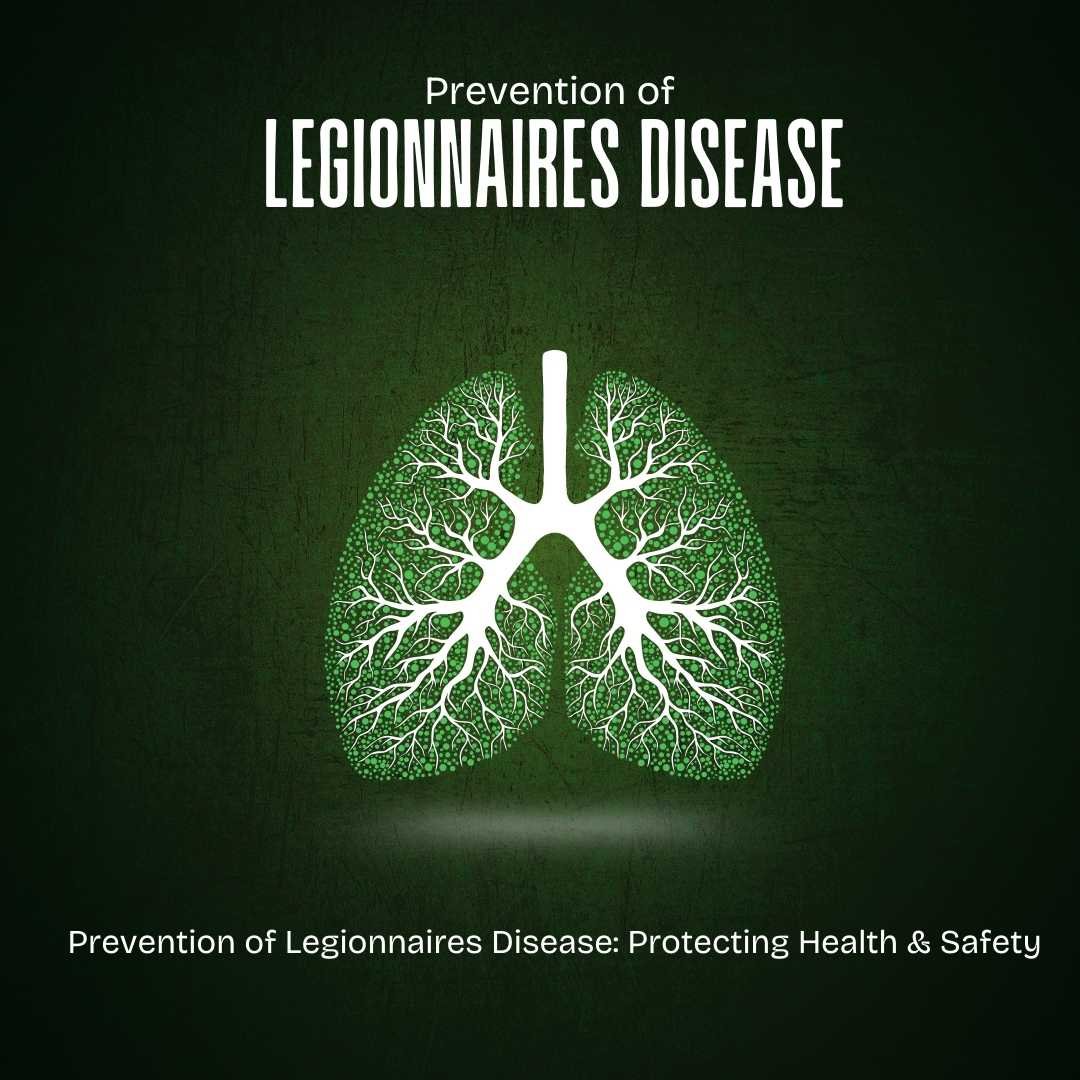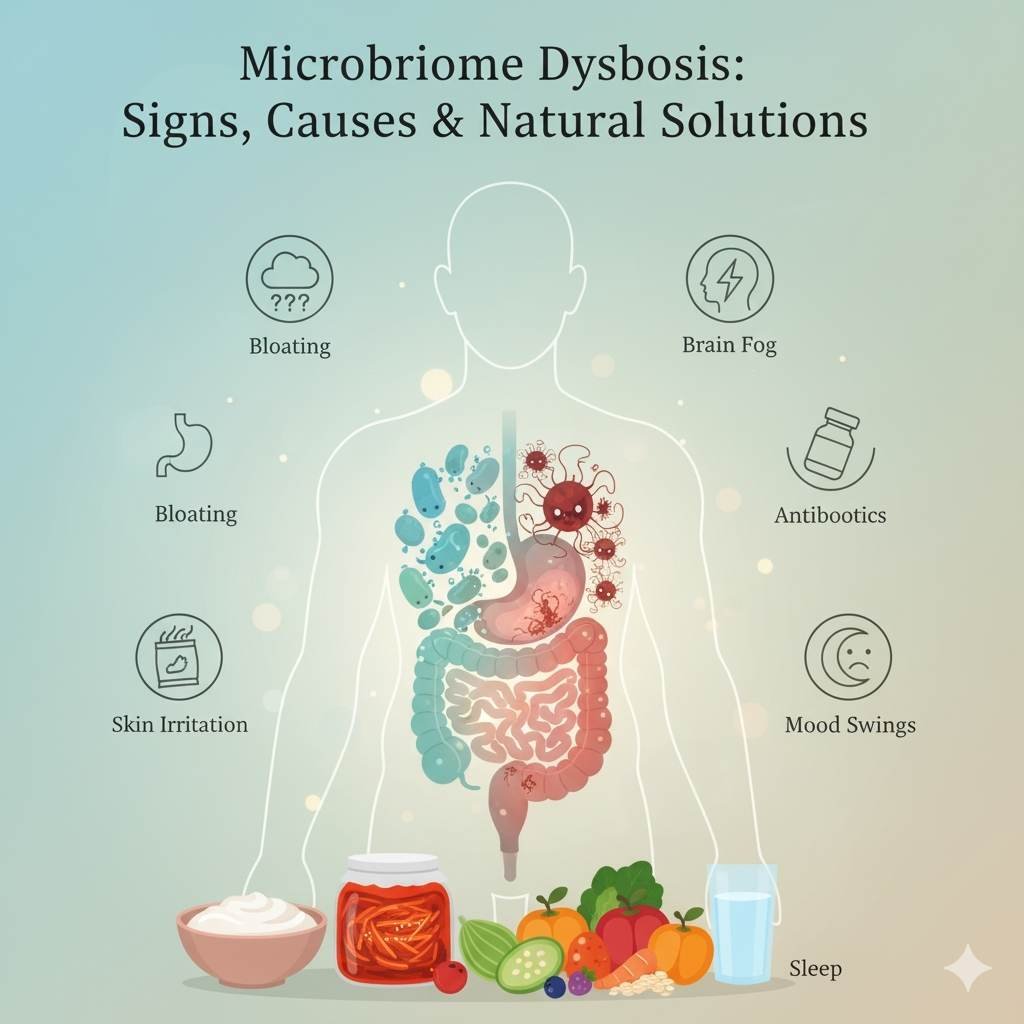Prevention of legionnaires disease is a critical public health priority that requires comprehensive understanding and proactive measures to protect communities from this potentially fatal respiratory infection.
Table of Contents
ToggleWhat is Legionnaires Disease and Why Prevention Matters
Legionnaires disease is a severe form of pneumonia caused by Legionella bacteria, primarily Legionella pneumophila serogroup 1, which accounts for approximately 80% of reported cases. This disease legionnaires represents more than just a respiratory infection—it’s a life-threatening condition that can progress rapidly from flu-like symptoms to acute respiratory distress syndrome and multiple organ failure if left untreated.
How to prevent legionnaires disease becomes paramount when considering the infection’s severity and mortality rates. Even with proper antibiotic treatment, mortality rates range from 5% to 15%, making prevention the most effective strategy for protecting vulnerable populations. The disease particularly threatens individuals over 50 years, current or former smokers, those with chronic heart, lung, kidney, or liver disease, cancer patients, and individuals with compromised immune systems.
Disease Legionnaires Overview and Transmission Pathways
Understanding transmission pathways is essential for effective legionnaires disease precautions. The infection occurs exclusively through inhalation of contaminated water droplets or aerosols—not through person-to-person contact. These dangerous aerosols are generated by artificial water systems including air conditioning units, cooling towers, whirlpool spas, fountains, shower units, and ice machines.
Legionella bacteria naturally inhabit freshwater environments like lakes and streams but become dangerous when they colonize man-made water systems. The bacteria can survive in various environmental conditions and multiply within protozoa and amoebae, creating ideal breeding grounds in poorly maintained water systems where temperatures range between 25-42°C.
The incubation period typically spans 2-10 days after exposure, during which the bacteria establish intracellular infections within alveolar macrophages. Initial symptoms mimic influenza—fever, headache, muscle aches, and loss of appetite—before progressing to pneumonia with cough, shortness of breath, and chest pains.
Key Statistics and Health Impact
The epidemiological impact of Legionnaires disease underscores why prevent legionnaires disease strategies are essential. While comprehensive global statistics vary, the disease represents a significant burden on healthcare systems worldwide, with outbreaks capable of affecting hundreds of individuals simultaneously.
Healthcare-associated cases pose particular concern, as hospital water systems can harbor Legionella bacteria, putting already vulnerable patients at extreme risk. The disease’s rapid progression means that delayed diagnosis or treatment can result in devastating outcomes, emphasizing the critical importance of prevention over treatment.
Ways to avoid Legionnaires disease infection through proper water system management can prevent sporadic cases and large-scale outbreaks. The World Health Organization emphasizes that while complete eradication of infection sources isn’t always possible, implementing appropriate control measures can substantially reduce risks.
The economic impact extends beyond healthcare costs to include outbreak investigation expenses, facility remediation, legal implications, and business disruptions, making prevention not just a health imperative but an economic necessity for facility managers and public health authorities.
Understanding Legionella Bacteria and Risk Factors
Comprehensive knowledge of Legionella bacteria control measures requires understanding the complex nature of these pathogens and the diverse factors that increase infection risk.
Disease Caused by Legionella – Bacterial Characteristics
Disease caused by legionella stems from a fascinating yet dangerous group of gram-negative, aerobic bacteria that exhibit unique survival characteristics. Legionella bacteria are small, unencapsulated bacilli that are nonmotile, catalase-positive, and weakly oxidase-positive. These fastidious organisms cannot grow anaerobically or on standard laboratory media, requiring specialized buffered charcoal yeast extract agar for cultivation.
The Legionellaceae family encompasses more than 42 species constituting 64 serogroups, with Legionella pneumophila causing up to 90% of legionellosis cases. Among the 15 identified serogroups of L. pneumophila, serogroup 1 accounts for approximately 80% of reported cases, making it the primary target for prevention of legionnaires disease efforts.
Legionella bacteria infection prevention becomes complex due to the organism’s biphasic lifecycle, which includes an intracellular replicative phase followed by a transmissive extracellular phase after exhausting host cell nutrients. This adaptive mechanism allows the bacteria to survive within macrophages, where they multiply and eventually cause cell death, releasing more bacteria to infect additional immune cells.
The infection mechanism involves bacteria entering lung tissue through aspiration or inhalation of contaminated aerosols. Once inside, virulent Legionella strains kill macrophages by blocking the fusion of phagosomes with lysosomes, preventing the normal bacterial destruction process. This sophisticated survival strategy explains why how to prevent legionnaires disease focuses heavily on environmental control rather than individual immunity.
Legionnaires Disease Risk Factors and Precautions for Vulnerable Populations
Legionnaires disease risk factors and precautions center around host susceptibility factors that significantly increase infection probability. Age represents the primary risk factor, with most cases occurring in individuals over 50 years old. This age-related vulnerability stems from declining immune function and increased likelihood of underlying health conditions.
Smoking history dramatically elevates risk, as damaged respiratory tissue provides enhanced bacterial adherence and reduced clearance mechanisms. Current and former smokers require intensified legionnaires disease precautions due to compromised pulmonary defense systems.
Chronic medical conditions create additional vulnerability pathways. Diabetes mellitus, chronic lung diseases, renal disease, and malignancies all compromise immune responses. Particularly high-risk groups include organ transplant recipients and patients receiving corticosteroids, who require specialized prevention protocols.
Immunocompromised individuals face mortality rates approaching 25%, compared to 10% in previously healthy people, emphasizing the critical importance of prevent legionnaires disease strategies for vulnerable populations. Healthcare settings must implement rigorous water management programs to protect these high-risk patients from nosocomial infections.
Environmental Conditions That Promote Bacterial Growth
Understanding environmental factors is essential for effective legionnaires disease environmental controls. Legionella bacteria naturally inhabit freshwater environments but become dangerous when they colonize artificial water systems.
Temperature represents the most critical growth factor, with optimal bacterial multiplication occurring between 25-42°C (77-108°F). Water systems maintaining temperatures within this range without proper disinfection create ideal breeding conditions. Hot water tanks, cooling towers, and decorative fountains frequently maintain these dangerous temperature ranges.
Stagnant water conditions promote bacterial proliferation by reducing circulation and disinfectant effectiveness. Dead-end pipes, infrequently used fixtures, and storage tanks with poor turnover rates become bacterial reservoirs. Ways to avoid Legionnaires disease infection include maintaining proper water circulation and eliminating stagnation points.
Biofilm formation provides protective environments where Legionella can survive disinfection attempts and multiply within protozoa and amoebae. These complex microbial communities form on pipe surfaces, cooling tower fill material, and other water system components, creating persistent contamination sources that require aggressive legionella contamination prevention techniques.
Nutrient availability from organic matter, scale deposits, and sediment accumulation supports bacterial growth and biofilm development, making regular system cleaning and maintenance essential components of comprehensive prevention strategies.
Read why Autoimmune Diseases are rising globally.
Discover essential steps for Autoimmune Disease Prevention
Water System Prevention Strategies
Effective prevention of legionnaires disease requires comprehensive water system management incorporating multiple control measures to create environmental conditions that prevent bacterial growth and transmission.
Legionnaires Disease Water System Maintenance Protocols
Legionnaires disease water system maintenance protocols form the foundation of effective bacterial control through systematic monitoring and management approaches. Water management programs must implement layered control measures that work together to protect building occupants from Legionella exposure.
Essential maintenance protocols require monitoring temperature, disinfectant residuals, and pH frequently based on system performance indicators. Measurement frequency should be adjusted according to the stability of performance values, with increased monitoring when high variability occurs. Regular documentation through site-specific log sheets, test procedures, service reports, and test results must be maintained on-site to ensure accountability.
Comprehensive maintenance includes regular cleaning and maintenance of water system components such as thermostatic mixing valves, aerators, showerheads, hoses, filters, and storage tanks. Cleaning and disinfecting water systems for Legionella should follow manufacturer recommendations before commissioning, startup, during idle periods, and after shutdown, with offline disinfection and cleaning performed at least annually.
Risk assessment protocols must identify water system management points where monitoring and controls can be implemented to prevent Legionella growth while preventing scald injuries. This includes developing schematics of building water systems showing water distribution, circulation, storage, heating, cooling, treatment, and monitoring pathways.
How to Stop Legionella Bacteria Growth in Plumbing
How to stop Legionella bacteria growth in plumbing requires eliminating conditions that support bacterial proliferation through strategic design and operational controls. Dead legs and dead-end piping must be eliminated or flushed at least weekly to prevent stagnation that favors Legionella growth.
Infrequently used outlets, including eye wash stations, emergency showers, and rarely accessed taps, require regular flushing to maintain water quality parameters within control limits. Ways to avoid Legionnaires disease infection include ensuring continuous water circulation and preventing stagnant conditions that create bacterial breeding environments.
System design modifications can minimize Legionella growth by keeping pipe work as short and direct as possible, adequately insulating pipes and tanks, and using materials that discourage bacterial growth. Thermostatic mixing valves should be installed as close as possible to outlets where scald risks are identified.
Legionella contamination prevention techniques include automated blowdown systems that intentionally discharge system water and replace it with supply water to maintain water quality. Consider filtration systems to reduce suspended solids in cooling water based on system factors like location and particle load.
Cleaning and Disinfecting Water Systems for Legionella
Cleaning and disinfecting water systems for Legionella requires systematic approaches that address both routine maintenance and emergency remediation protocols. Scale, corrosion, sediment controls, and system cleaning are critical for cooling tower operations and Legionnaires disease prevention.
Disinfectant residual management varies by system type and chemical used. Oxidizing disinfectants such as chlorine and bromine must maintain measurable residuals throughout each day according to manufacturer recommendations. Non-oxidizing disinfectants require maintenance based on product label concentration and contact time specifications.
pH levels must be maintained based on disinfectant type and manufacturer recommendations to prevent corrosion while ensuring effective bacterial control. Automated anti-corrosion, anti-scale, and disinfectant addition and monitoring systems improve consistency and effectiveness.
Cold water storage tanks require periodic cleaning with water drained from hot water cylinders to check for debris or signs of corrosion. Showerheads and hoses must be cleaned and descaled at least quarterly to prevent biofilm formation and bacterial colonization.
Temperature Control Methods for Hot and Cold Water Systems
Temperature control methods for hot and cold water systems represent the primary defense against Legionella proliferation, requiring precise maintenance of thermal barriers that prevent bacterial growth.
Hot water storage systems must maintain temperatures above 140°F (60°C) in storage tanks, with hot water circulation never falling below 120°F (49°C). Instantaneous and semi-instantaneous heat exchangers require minimum temperatures of 130°F (54.4°C), while water in potable hot-water system piping must maintain at least 124°F (51.1°C).
Legionnaires disease environmental controls for cold water systems require storage and distribution temperatures below 68°F (20°C), as Legionella may grow at temperatures as low as this threshold. The optimal approach maintains cold water storage and distribution below the favorable Legionella growth range of 77-113°F (25-45°C).
Sentinel outlets representing the furthest and closest points to each tank or cylinder require monthly temperature monitoring. Hot water storage cylinder temperatures need monthly verification, while cold water tank temperatures require checking at least every six months. Pipe insulation must be maintained throughout water systems to preserve appropriate temperatures from source to endpoint.
Healthcare Setting Prevention
Healthcare facilities face unique challenges in preventing Legionnaires disease in healthcare settings due to vulnerable patient populations and complex water systems that create ideal conditions for bacterial growth and transmission.
Preventing Legionnaires Disease in Healthcare Settings
Preventing Legionnaires disease in healthcare settings requires comprehensive water management programs specifically designed for medical facility environments where immunocompromised patients face heightened infection risks. Healthcare-associated Legionnaires disease represents a particularly serious concern, with mortality rates reaching up to 25% in vulnerable populations compared to 5-15% in community-acquired cases.
Healthcare facilities must implement legionella prevention guidelines that address the unique operational challenges of medical environments, including 24/7 operations, emergency preparedness requirements, and patient safety protocols that cannot be interrupted for routine maintenance. The complexity of healthcare water systems, including multiple buildings, varied water uses, and specialized equipment, demands sophisticated prevention strategies.
Ways to avoid Legionnaires disease infection in healthcare settings include establishing water safety teams comprising infection control professionals, facility managers, and clinical staff who understand both patient care requirements and building operations. These teams must develop comprehensive water management plans that identify all water systems, assess Legionella risks, establish control measures, and implement monitoring protocols.
Patient protection strategies focus on high-risk individuals including organ transplant recipients, cancer patients receiving chemotherapy, individuals with chronic lung diseases, and elderly patients with multiple comorbidities. Special precautions may include providing bottled water for consumption, using sterile water for medical procedures, and implementing enhanced environmental controls in high-risk patient areas.
Federal Requirements for Healthcare Facility Water Management
Federal requirements for healthcare facility water management mandate that healthcare facilities maintain comprehensive water management programs to prevent Legionella growth and protect patients from healthcare-associated infections. The Centers for Medicare & Medicaid Services requires healthcare facilities participating in Medicare and Medicaid programs to develop and implement policies and procedures to inhibit microbial growth in building water systems.
Healthcare facilities must conduct legionnaires disease risk factors and precautions assessments that identify all building water systems and equipment that could promote Legionella growth. These assessments must consider water temperature, pH, disinfectant levels, and the presence of biofilms or scale that could harbor bacteria.
Documentation requirements include maintaining records of water quality monitoring, system maintenance, employee training, and any remediation activities. Facilities must establish clear protocols for responding to positive Legionella test results, including patient notification procedures and clinical monitoring protocols.
Legionella bacteria control measures must comply with industry standards such as ASHRAE 188 and be tailored to each facility’s specific water systems and patient populations. Regular third-party assessments and validation of control measures ensure ongoing compliance with federal requirements.
High-Risk Equipment and Areas in Medical Facilities
High-risk equipment and areas in medical facilities require intensified monitoring and control measures due to their potential for generating contaminated aerosols or serving vulnerable patient populations. Dental equipment represents a significant risk category, particularly dental unit water lines that can harbor Legionella bacteria and expose both patients and staff to contaminated aerosols during procedures.
Ice machines throughout healthcare facilities require special attention as they can become contaminated and spread bacteria through ice consumption or contact with medical equipment. Cleaning and disinfecting water systems for Legionella in ice machines involves regular sanitization, filter replacement, and water quality monitoring.
Respiratory therapy equipment, including nebulizers, humidifiers, and hydrotherapy equipment, can create infectious aerosols if contaminated with Legionella bacteria. These devices require specialized cleaning protocols using sterile or distilled water rather than tap water.
Learn about causes, diet, and treatments in our guide to Fatty Liver.
Identify common Fatty Liver Symptoms early.
Control Measures and Guidelines
Comprehensive legionella bacteria control measures require systematic implementation of evidence-based protocols established by leading health authorities to effectively prevent bacterial growth and transmission in various facility types.
Legionella Prevention Guidelines from CDC and Health Authorities
Legionella prevention guidelines from CDC and health authorities establish the foundation for effective water management programs through scientifically validated control strategies. The Centers for Disease Control and Prevention recommends implementing comprehensive water management programs based on ASHRAE Standard 188, which provides systematic approaches for managing Legionella risks in building water systems.
CDC guidelines emphasize the importance of establishing water safety teams comprising facility managers, infection control professionals, and maintenance personnel who understand both building operations and public health requirements. These teams must develop site-specific water management plans that identify all building water systems, assess Legionella growth potential, and implement appropriate control measures.
Prevention of legionnaires disease guidelines require facilities to maintain detailed documentation including system schematics, control measure specifications, monitoring protocols, and maintenance schedules. The CDC toolkit provides specific modules for different system types, including potable water systems, cooling towers, decorative fountains, and spa pools, each with tailored prevention strategies.
Health authorities emphasize risk-based approaches that prioritize control measures based on system complexity, building occupancy, and population vulnerability. How to prevent legionnaires disease effectively requires understanding that different facilities—healthcare settings, hotels, residential buildings—require customized prevention strategies based on their unique risk profiles.
International guidelines from organizations like the World Health Organization provide additional frameworks for Legionella control, emphasizing the global nature of prevention efforts and the need for standardized approaches across different regulatory environments.
Legionella Bacteria Control Measures Implementation
Legionella bacteria control measures implementation requires systematic deployment of multiple control strategies working together to create environmental conditions that prevent bacterial growth and proliferation.
Primary control measures focus on maintaining water temperatures outside the optimal Legionella growth range of 77-113°F (25-45°C) through proper heating, cooling, and circulation systems. How to stop Legionella bacteria growth involves ensuring hot water systems maintain temperatures above 140°F (60°C) in storage and above 120°F (49°C) in circulation, while cold water systems remain below 68°F (20°C).
Chemical disinfection represents a critical secondary control measure, with oxidizing disinfectants like chlorine and bromine requiring measurable residuals throughout each operational day. Non-oxidizing disinfectants must maintain manufacturer-recommended concentrations and contact times to ensure effective bacterial control.
Legionella contamination prevention techniques include eliminating dead legs and stagnant areas where bacteria can proliferate, implementing regular flushing protocols for infrequently used outlets, and maintaining proper pH levels to optimize disinfectant effectiveness.
Physical control measures encompass regular cleaning and maintenance of system components, including descaling operations, biofilm removal, and replacement of water system elements that cannot be adequately cleaned. Cleaning and disinfecting water systems for Legionella must follow manufacturer specifications and industry best practices for each system type.
Water Safety Protocols and Monitoring Systems
Water safety protocols and monitoring systems provide the operational framework for maintaining effective Legionella control through systematic surveillance and response procedures.
Monitoring protocols require regular measurement of critical control parameters including temperature, disinfectant residuals, pH, and conductivity at predetermined locations throughout water systems. Measurement frequency depends on system performance stability, with increased monitoring when parameter variability occurs.
Legionnaires disease water safety protocols establish clear action levels and corrective measures when monitoring results exceed acceptable ranges. These protocols must specify immediate response procedures, investigation requirements, and system remediation steps to restore effective control.
Documentation systems must capture all monitoring data, maintenance activities, training records, and corrective actions through standardized log sheets and reporting procedures. Legionnaires disease environmental controls require maintaining these records on-site for regulatory compliance and performance evaluation.
Automated monitoring systems can improve consistency and reduce human error through continuous parameter measurement, alarm systems for out-of-range conditions, and automated chemical dosing based on real-time water quality conditions.
Read More Related Articles
Understand causes and prevention of Typhoid.
Recognize early warning signs of Typhoid Symptoms







